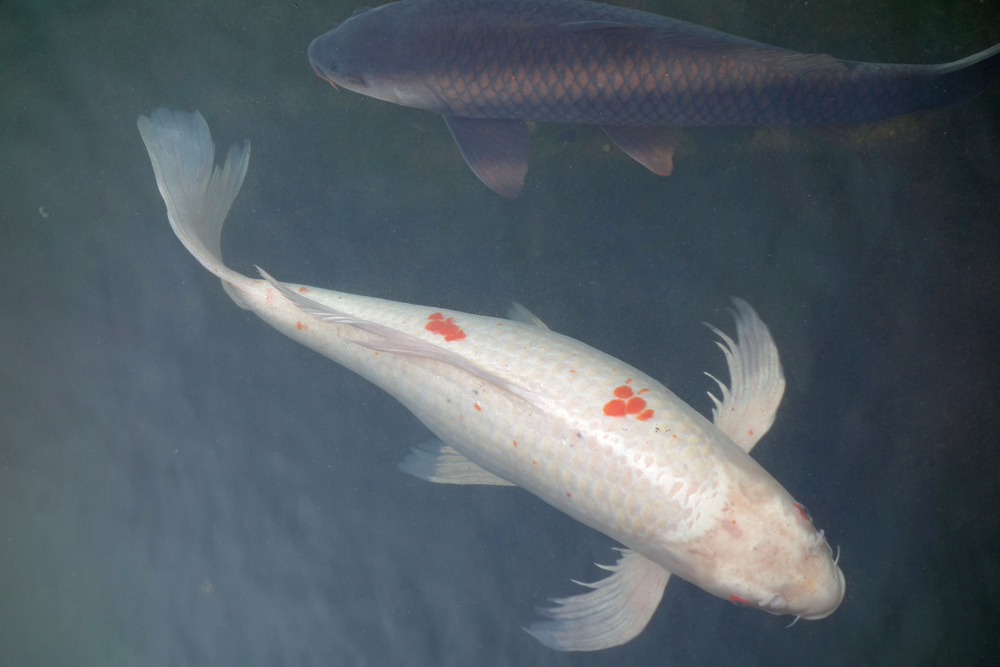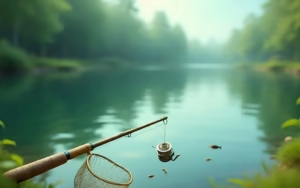Let’s step into the amazing world of Asagi Koi, a special kind of fish that brings a lot of beauty to the Koi family. Although Koi may seem similar at first, there are a whole bunch of different types, each with its own appearance and personality. Asagi Koi, one of the favorites, is ancient and has an excellent connection to the wild carp.Asagi Koi has been around since the early days of people keeping Koi as pets. They have a fantastic blue-black pattern on their rear that looks like a net. In this guide, we explore Asagi Koi’s story, see what makes them unique, learn about the different types of Asagi Koi, and find out how rare and expensive they are. Plus, we will share some tips on taking care of Asagi Koi.
Table of Contents
ToggleMore about Asagi!
Koi fish are ancient, like thousands of years old! In the fourth century, people in China and Japan began collecting special carp and breeding them to create the colors we see today. They are like descendants of the usual carp, and DNA objects say the usual carp comes from East Asia. That’s where Koi came from! Around the sixth century, different types of Koi began to appear, and since then, tons of them have had different colors and patterns. Asagi koi is one of them! Asagi Koi is one of the oldest types; people see them as the first “fantasy” or “decorative” Koi. Their blue-coloured scales have a great pattern that looks like a net. Sometimes, their colors are somewhat turned off, making it a unique taste for fish fans. Asagi Koi originally came from “Magoi, “meaning “true carp.” The Asagi we have today were carefully bred from a special kind of magic with a genetic twist that gives them a bluish hue. It is believed that these incompatible fish have existed since the 18th -century, and people began to make them more beautiful in 1868.
What does “Asagi” mean?
Have you ever wondered what “Asagi” really means? Well, it’s a bit difficult to define! Some say it has come from Japanese words for “indigo” or “light blue”, as others think it is linked to “sunset” or “mist.” Online translators do not provide a clear response, but considering the beautiful colors and patterns of Asagi Koi, any of these possibilities can make sense. It is like a small language mystery that adds to the beauty of the amazing fish!
Different varieties of Asagi Koi:
Classic Asagi:
The Classic Asagi Koi can be easily identified by its net-like pattern, from head to tail, excluding head, fins and tail. They have a pale blue or blue-coloured body, light blue or white reticulation, and a white head, fin, and tail with red or red-orange markings called “Hi”.
-
Konjo Asagi:
Konjo Asagi is one of Asagi’s major styles, with dark or almost black-blue scales.
Narumi Asagi:
Narumi Asagi, the other main style, shows light scales in medium blue. The remaining types of Asagi are the Konjo and Narumi substations.
Hi Asagi:
Hello, there is only more red or orange than usual. The Hi extends upward from the abdomen past the lateral line, and some Hi Asagi may be entirely red.
Gin Rin Asagi:
Gin Asagi also has metallic silver scales, usually coloured silver konjo and white silver reticulation.
Akebi Asagi:
Also known as Mizu Asagi or Mizu Asaki. It has a lighter blue colouration among Asagi types, with blue or light grey blue scales.
Taki Asagi:
Taki Asagi often possesses the Konjo colouration but presents a horizontal white line between its dark back and the red stomach.
Asiag Sanke:
Asagi Sanke combines Hi, Shiro (white) and sumi (black) colours, the overlap of white or light blue/light grey. Reticulation is still present, and Asagi Sanke can have many patterns, such as Tancho, Yondan and Maruten. They usually have light blue backs, a lower white stomach, and Hi on the head and the upper abdomen.
Asagi Koi Care Tips:
Water quality checks:
- Be attentive to the colours of your Asagi: They will tell you if the water is off.
- Excessive spirulina can make white parts turn yellow.
- Hard water or high pH can give them darker scales, which can be excellent for some, but not everyone.
Cosy water conditions:
- Make the pond right: 50 ° F to 78 ° F, PH 7.5 to 8.5, and good oxygen levels.
- Keep salt low and make sure there is no dirt floating around.
Temperature tricks:
- The water temperature can make your Asagi’s colour pop or drop. Colder water lends to darker red or blue colouration, while warmer waters lend to less vibrant hues.
- Keep the temperatures between 50 ° F and 78 ° F.
Delicious diets:
- Asagi is a demanding eater, thanks to their ancestors.
- Boost their colours with foods containing astaxanthin, spirulina, or guanine.
- You don’t just go beyond: too many colour boosters can turn their white parts yellow.
Breeding Asagi Koi:
If you are thinking about making the baby Asagi Koi, it is like trying to create a unique painting. But here’s the thing: it’s not as easy as it seems. Getting the exact colours and patterns you want is pretty much like catching a problematic fish. Even professionals who know about these things require a lot of attempts and a lot of time to do it properly.
Asagi Koi Prices – what you need to know
Decoding Price tags:
- Buying Asagi Koi can be like buying something special, and prices can vary.
- If you want a little Asagi (young one), it’s generally not very expensive, maybe less than $ 50.
- But big and adult Asagi can be more elegant and cost several hundred dollars.
Type matters:
- Some types of Asagi, such as those with astonishing patterns (gin asagi), can be super expensive, think several thousand dollars!
- Hi Asagi, which may have a less good pattern, may be on the cheapest side.




